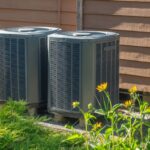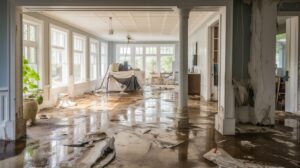
Electrical outlets deteriorate over time and require replacement to maintain home safety and prevent potential hazards. Recognizing the warning signs of outlet failure helps homeowners address problems before they escalate into dangerous situations. Old outlets can cause fires, electrocution, and damage to expensive electronics when they fail to function properly. Trusted electrical services contribute to peace of mind, as professional evaluations and timely interventions safeguard people, property, and essential equipment. Many homeowners attempt DIY outlet replacement, but complex situations often require expert evaluation to ensure proper installation and compliance with local electrical codes.
Visual warning signs
Outlets showing visible damage require immediate attention regardless of their age or apparent functionality. Discolored or burnt areas around outlet covers indicate overheating that could lead to fires. Cracks in outlet faces or loose covers suggest internal damage that compromises safety. Scorch marks on walls near outlets signal serious electrical problems requiring professional intervention. Melted or warped outlet covers indicate extreme heat generation that poses immediate fire risks. These visual indicators often develop gradually, making regular inspection important for early detection. Even minor discoloration warrants investigation, as electrical problems typically worsen over time without intervention.
Performance indicators
Outlets that spark when plugs are inserted or removed signal dangerous arcing that can ignite fires. Warm or hot outlets during normal use indicate overloading or internal resistance problems. Plugs that fit loosely or fall out easily suggest worn internal contacts that create poor connections and heat buildup. Intermittent power loss from specific outlets indicates connection problems that affect reliability and safety. Outlets that trip circuit breakers repeatedly may be overloaded or damaged internally. These performance issues create inconvenience while potentially masking serious safety hazards.
Age-based replacement
Outlets installed before 1960 likely lack modern safety features and should be evaluated for replacement regardless of apparent condition. Two-prong outlets without grounding connections fail to meet current safety standards for most household applications. GFCI protection requirements for bathrooms, kitchens, and outdoor areas make older outlets inadequate for these locations. Federal and local codes have evolved to require enhanced safety features that older outlets cannot provide. Aluminium wiring installations from the 1960s and 1970s create special concerns that may necessitate complete outlet replacement with compatible devices.
Safety considerations
Always turn off the power at the circuit breaker before inspecting or replacing outlets. Use a voltage tester to confirm power is off before touching any wires or components. Wet conditions make electrical work extremely dangerous and should be avoided completely. A professional electrician has the tools and knowledge to handle complex wiring situations safely. Permit requirements vary by location and may mandate professional installation for outlet replacement projects. Insurance policies may require professional installation to cover electrical damage claims.
Modern upgrade benefits
New outlets offer enhanced safety features, including GFCI protection, USB charging capabilities, and improved surge protection. Smart outlets provide remote control and monitoring capabilities that add convenience and energy efficiency. Arc fault circuit interrupter (AFCI) outlets detect dangerous arcing conditions and shut off power automatically.
Upgrading to modern outlets improves home value while providing better protection for electronic devices. Energy-efficient outlets can reduce phantom power consumption from devices in standby mode. Replacing old electrical outlets at appropriate intervals maintains home safety while providing modern conveniences and protection features. Regular inspection and timely replacement prevent electrical hazards while ensuring reliable power distribution throughout the home.







